Background
A key portion of this two-year EU training program, X-libris SMART ICT 3.0 Libraries Services, focuses on reconceptualizing in-service librarian training and developing Open Educational Resources. The project was funded by the Turkish National Agency in cooperation with the Erasmus+ program KA2 Strategic Partnership. University and public libraries in Bulgaria, Lithuania, Germany, and Spain served as project partners. Project coordinator is the Hacettepe University.
An Outdated Service Model
Libraries traditionally have served as lifelong learning centers for residential and educational communities around the world. But when Internet-connected devices offer remote access to so many resources, why would anyone need libraries? What new e-services they can offer to their customers?
“Literacy can no longer be described as paper-based reading and writing,” “Young people today are adopting the visual, Internet-enabled literacy of WhatsApp, Line, Google, Twitter, YouTube, Instagram, and Facebook. Yet few libraries offer innovative services rooted in this new literacy.”
To be sure, most libraries operate on an outmoded business model. For one, their traditional role as physical book repositories has diminished amid the accelerating shift to digital information storage.
Library patrons, too, are less interested in stored physical media and more interested in using library facilities as meeting places or learning centers. “Many people now think of a library as a kind of Starbucks,” Young people go for the free Wi-Fi, while older users sit in the reading rooms to browse magazines and newspapers.”
As a result, libraries are losing both customers and financial support. Closures, staff reductions, and internal organizational struggles for resources and personnel are all changing the way libraries operate. And that is severely affecting their key role in lifelong learning.
Library services must be redesigned for our digital age, and they must be redesigned by librarians. Librarians, therefore, must reconceptualize their careers, which calls for the redesign of library science curriculums and in-service training programs.
The X-libris project seeks to train;
1) working librarians and library managers, and
2) university library science students, faculty, and administrators in business modeling, design thinking, service design, and other methodologies that enable librarians to redesign their careers — or even the libraries in which they work.
Lego® Serious Play®, Gamification, Crowdfunding and Business Model You® methodologies are used in the tarining sessions.
The project has run a series of workshops in different library environments such as academic, public and private, rural and city libraries and librarians' educational training centers.
Final users were invited to participate in the workshops to co-design and prototype some of the new e-services based on ICT to improve user experience.
Business concepts were part of the workshops including Branding, Service design, Gamification, and Green information literacy.
The main concepts for Open Educational Resources, MOOCs and a final Methodology Book were design for prototyping.
Study case workshop at Pencho Slaveykov Regional Library –Varna BulgariaVarna
Workshop participants were explained originally BMYOU Canvas is designed for setting up new personal career business. The canvas appears in English language. To facilitate the workshop in Bulgarian language the Canvas was adapted for Librarians by Pencho Slaveykov Regional Library staff.
All participants had to explain their ideas using 9 different blocks in the canvas. This drove the librarians to answer important questions never answered before in a structured way, such as what is the service (key activities), who helps you (key partners), how the service helps (expected results), how you interact (relationship Library-Users), who are your users (target groups), what you have (key resources), how you deliver your service (channels), what you give (costs & efforts) and what you get (revenue and benefits).
Note: The BMYOU Canvas adaptation to library’s needs helped each group to progress faster. While presenting their models the participants proceeded to develop their services motivated by questions and propositions of Daniel Weiss and Serap Kurbanoglu and strong feedback provided by all participants. It was confirmed that BMYOU is a very good tool for structuring and clarifying the initial ideas to develop new e-services that affect not only one department, but also the library as whole organization since it modifies the journey map of the librarian.
The structure of the workshop followed the “method for reinventing your career” because by changing the librarians career you generate an impact on the services that change the library as organization. So it was important to personalize the service to gain a wider integration in the organization.
Librarians do not have a business approach, however BMYOU showed they could operate their services as businesses units as far you explain them how to structure it in building blocks.
An introductory session explaining the Business Model You 9 blocks concept was given before they started to fill in.
1. Draw your Personal BMYOU as it stands today (meaning the service you provide)
2. Identify the improvement of the service (possible focus on transforming it into e-service)
3. Questioning the service (the bad and the good experience)
4. Modify and evaluate (based on the insights provided by the participants)
5. Redraw your new e-service Model (deliver the first prototype of the new e-service)
A service matrix for new e-service was developed.
Librarian Personal Business Model(s) resulting from the training gave them the understanding how to structure the new activities, Value Propositions, Channels and Key Resources needed to develop new e-services. Insights from workshop participants shaped the block content.
Key activities
E-service Matrix components definition:
• Name of the Service (here indicate/suggest a name to the new service)
• Smart ICT (here indicate/suggest the smart ICT to be used to deliver this service such as applications/channels to use like Pinterest, Instagram, Twitter, Vimeo and/or devices to use such as tablets, mobile devices, etc)
• Nature (here define the nature of offering this service using ICT in the suggested way by using the following labels innovative/creative, common practice, out dated/old fashioned)
• Target Group (here define the target age group this service aims such as pre-school children, school children, adults, elderly. If it is for all age groups define what would be the differences (if any) in the service based on Smart devices users profile. Make it clear age profile is not longer a category group since grand mothers and kids can use the same smartphones and applications.
• Infrastructure (here define infrastructural requirements such as Internet connection, broadband, features and the quantity of devices to utilize such as minimum 10 tables, smartphones, etc.)
• Support (here define support needed (if any) from other professionals such as graphic designer, innovation designer, programmer, teacher, app developer, etc.)
• Knowledge & Competences Needed by the Service Provider (here define profile; knowledge and competences required by the partner institution to deliver this service.
• In-service Training for Service Provider (here define the in-service training need for librarians. A comparison between what is defined in the previous cell and the actual case will indicate in-service training needs)
• Knowledge & Competences for Users (here define knowledge and competences required by users to be able to use this service. A comparison between what is defined here and the actual case will user training needs)
• User Training Needs (here define the training need for users. A comparison between what is defined in the previous cell and the actual case will indicate user training needs)
Value Propositions
• Acquiring new soft & technical skills in social media and web 2.0 tools
• Designing new e-services
• Re-designing library customer journey
• Delivering innovation through ICT
Channels:
• New in-service training department
• Own new social media network
Key Resources:
• New toolkit –Methodologies, templates,
• New Mobile/ Apps design skills
The cooperation between librarians and final users prove to be successful since they have identified new users, new behaviors, new services and new opportunities for their carriers.
Key activities:
• New users profile definition
• SMART services research
• Web 2.0 tools, training
• Final user integration in service design
• Team building
Value Propositions:
• New SMART services
Channels:
• Social Media, Pinterest, Vimeo, Apps
Key Resources:
• SMART ICT users
• Training Methodologies templates
• E-services catalogue
• E-readers
• Qualified staff
Lessons Learned
1. X-Libris methodology enabled the reformulation of the Social Media literacy to gain engagement to handle community feelings and sense of belonging to libraries.
2. X-Libris methodology enabled librarians to visualize the lack of journey maps in both sides librarians and final users. The what, the how and the why of the services they provide were not defined.
3. X-Libris methodology brought into light their traditional way of doing services compared with the needs of increased competences on Mobile ICT Apps that came out.
4.X-Libris methodology has identified clear social media channels to improve "digital Darwinism" enabling by extension team building and networking at internal level as first step to tackle new consumers later, so it defined the two steps implementation process.
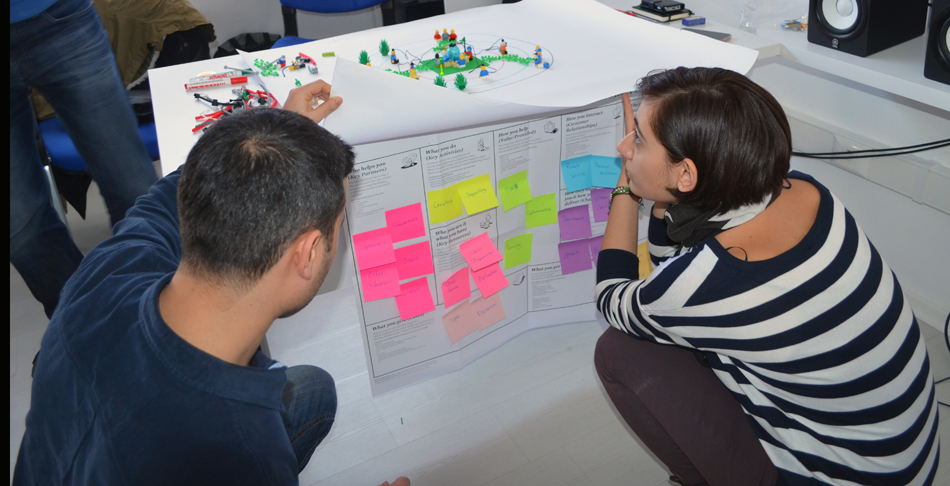

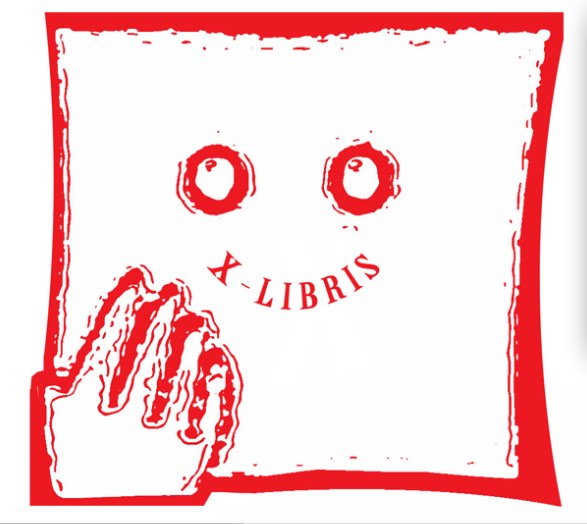
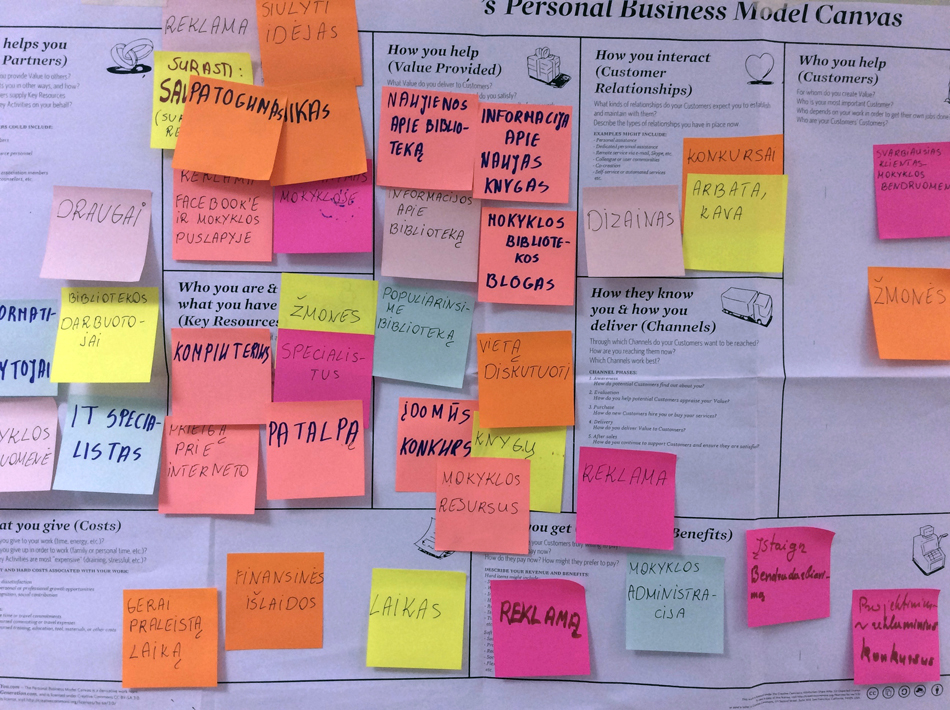
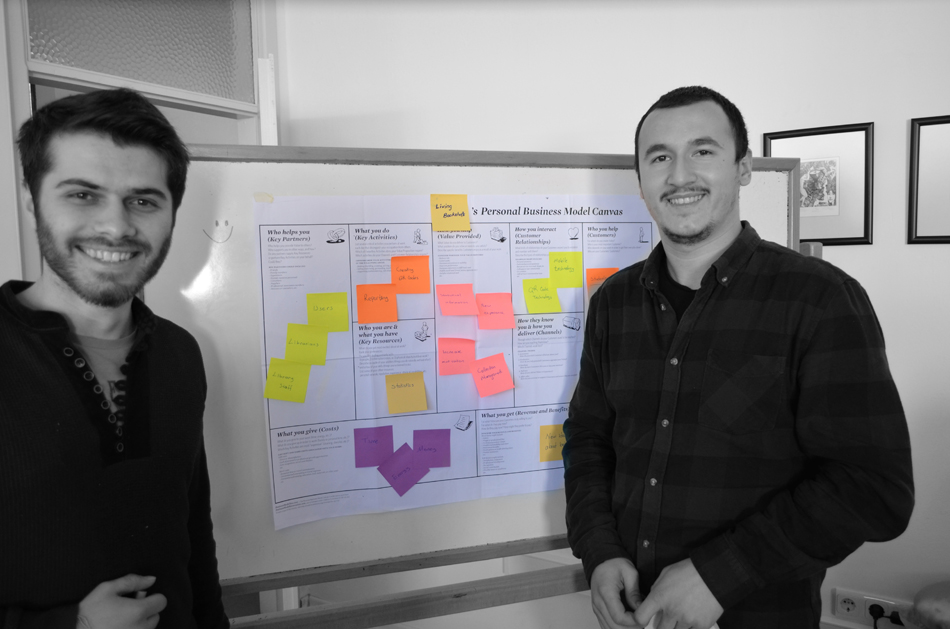
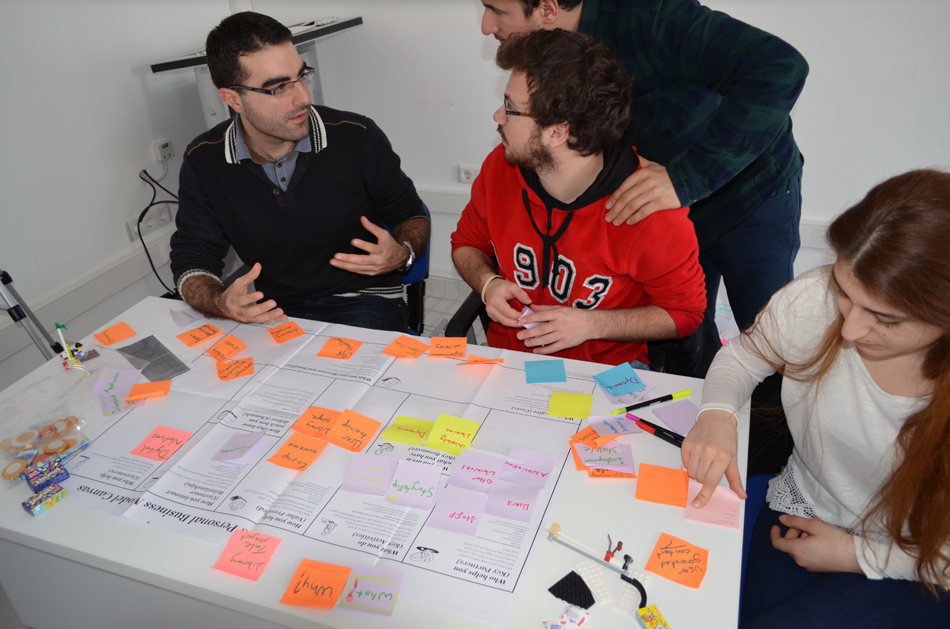
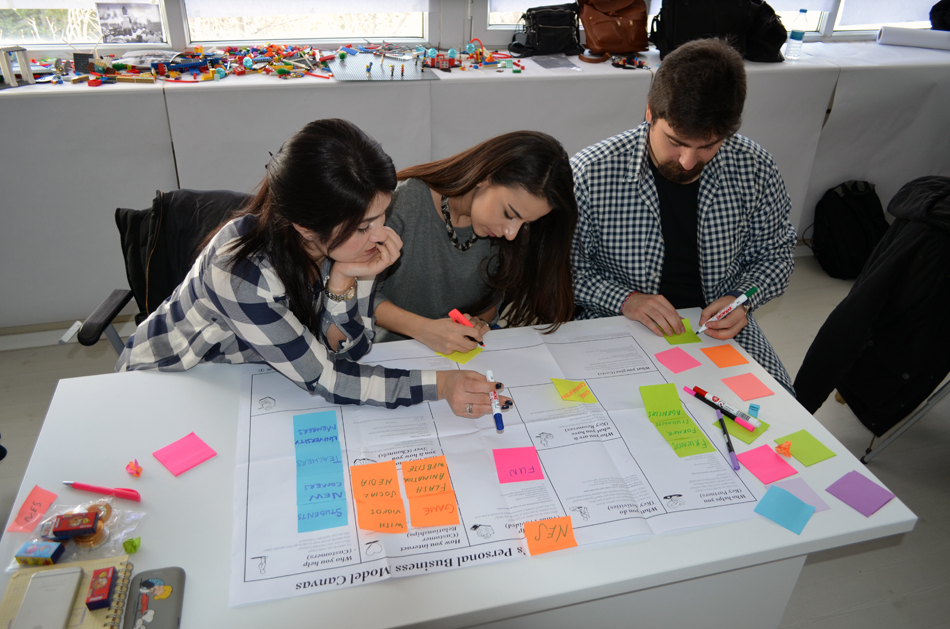
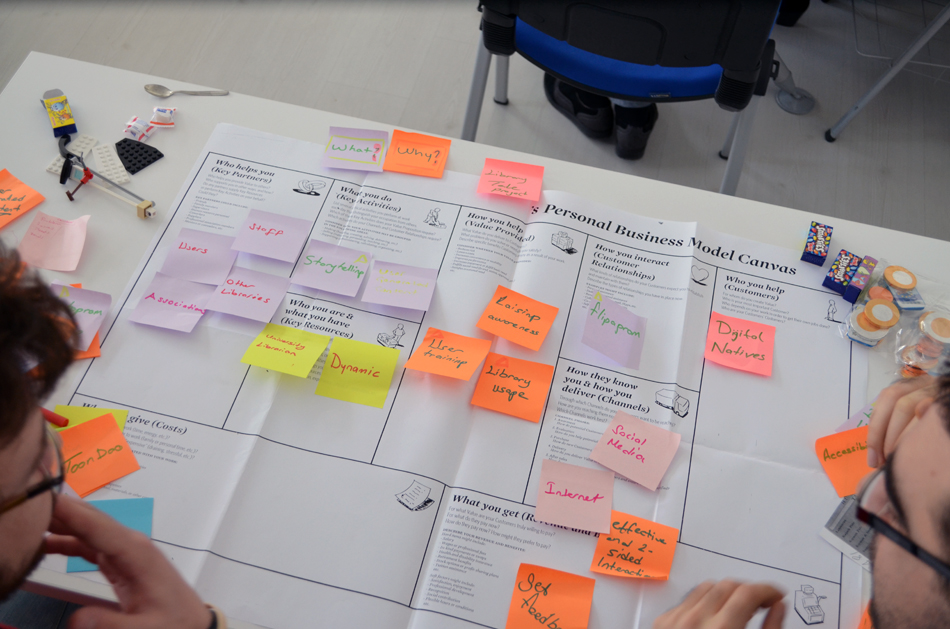
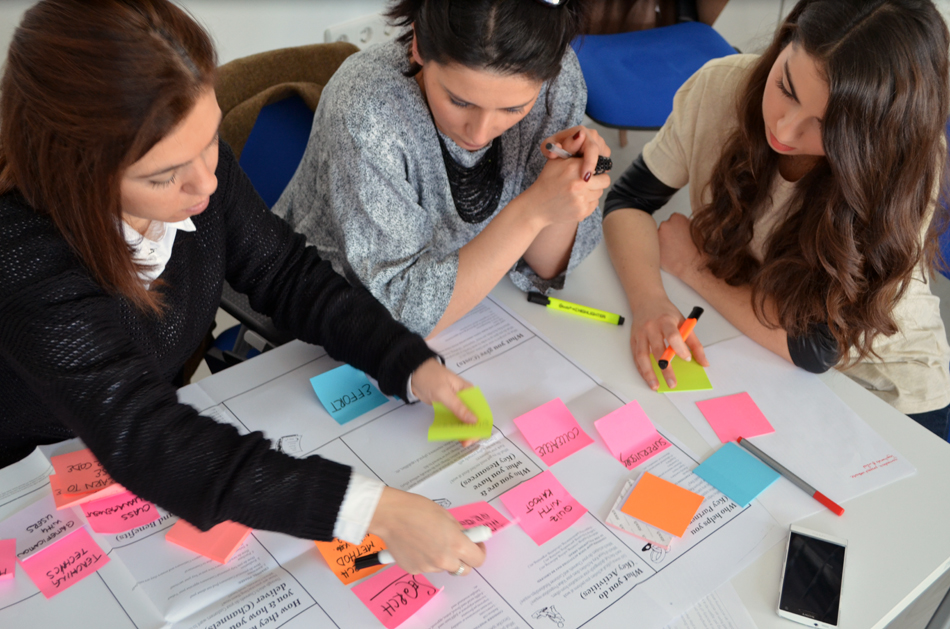
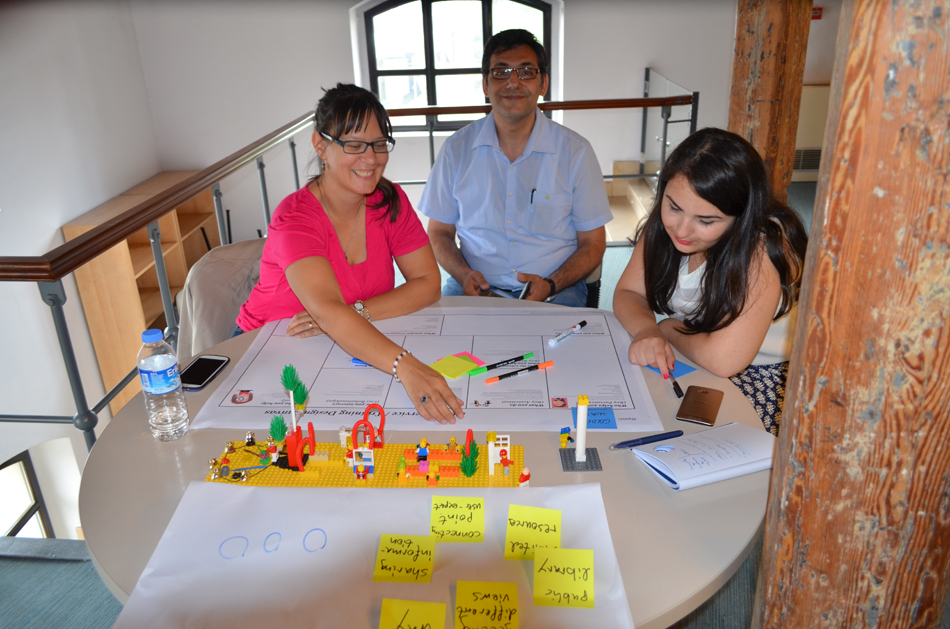
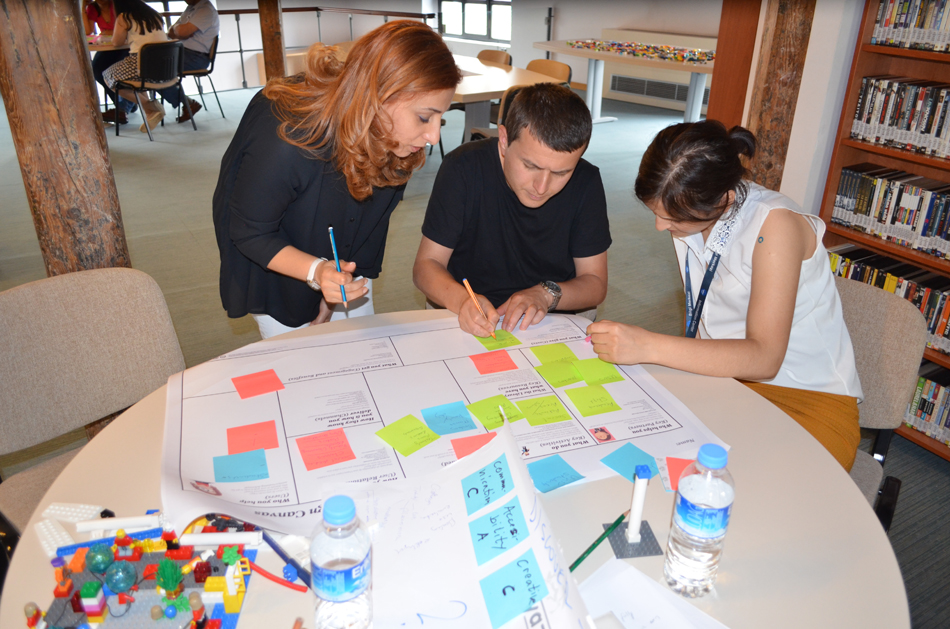
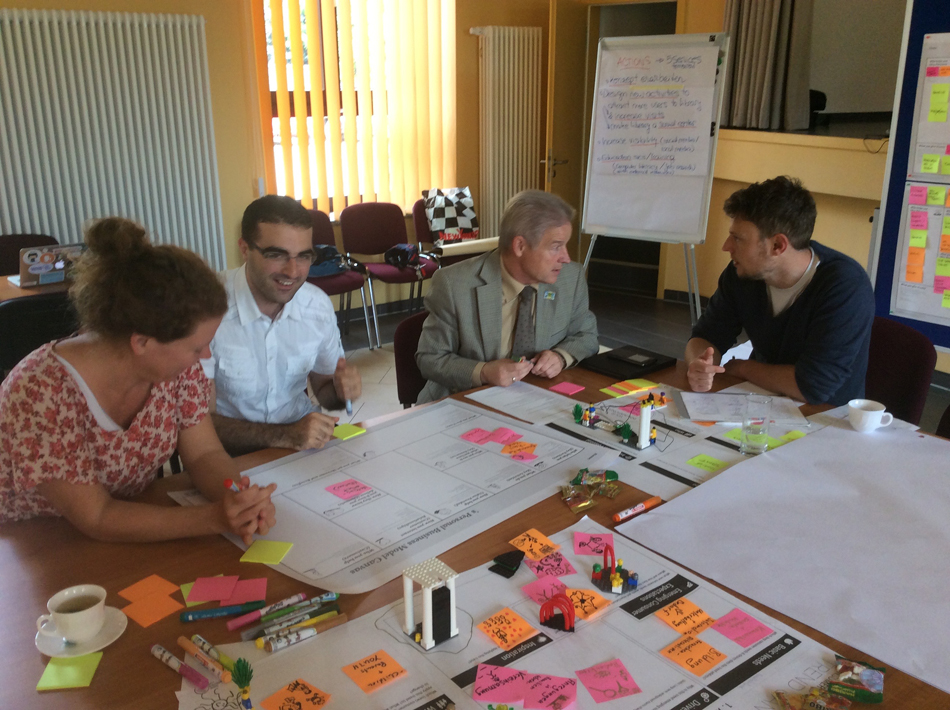
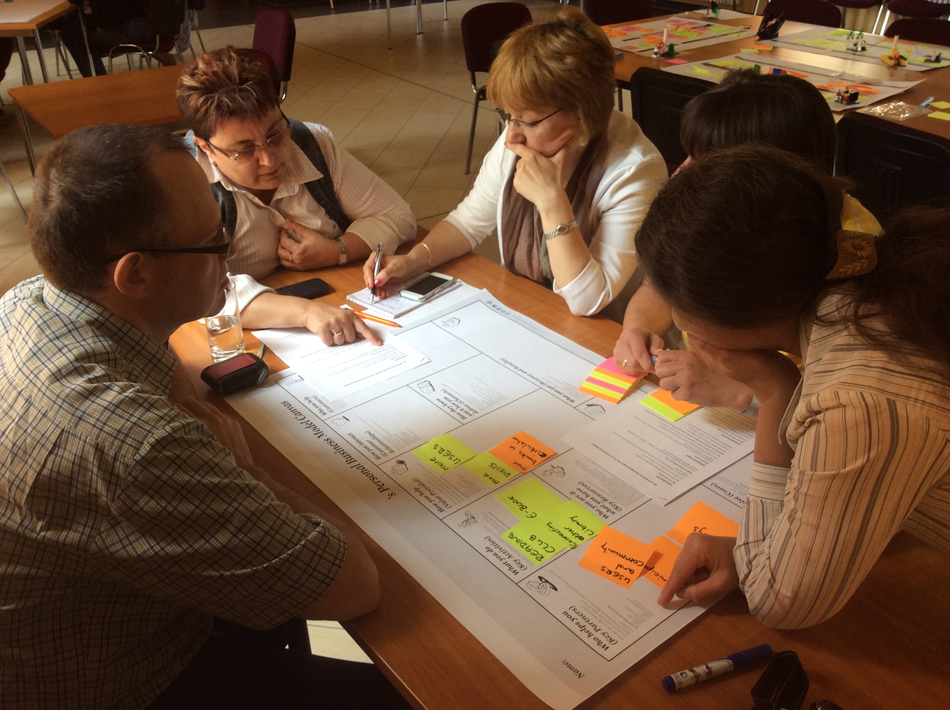
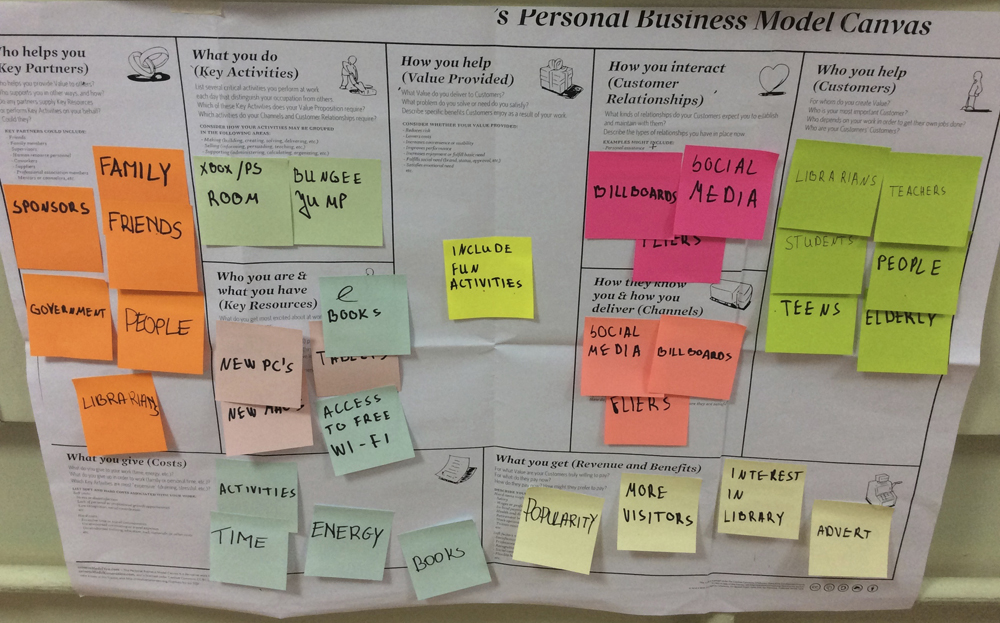
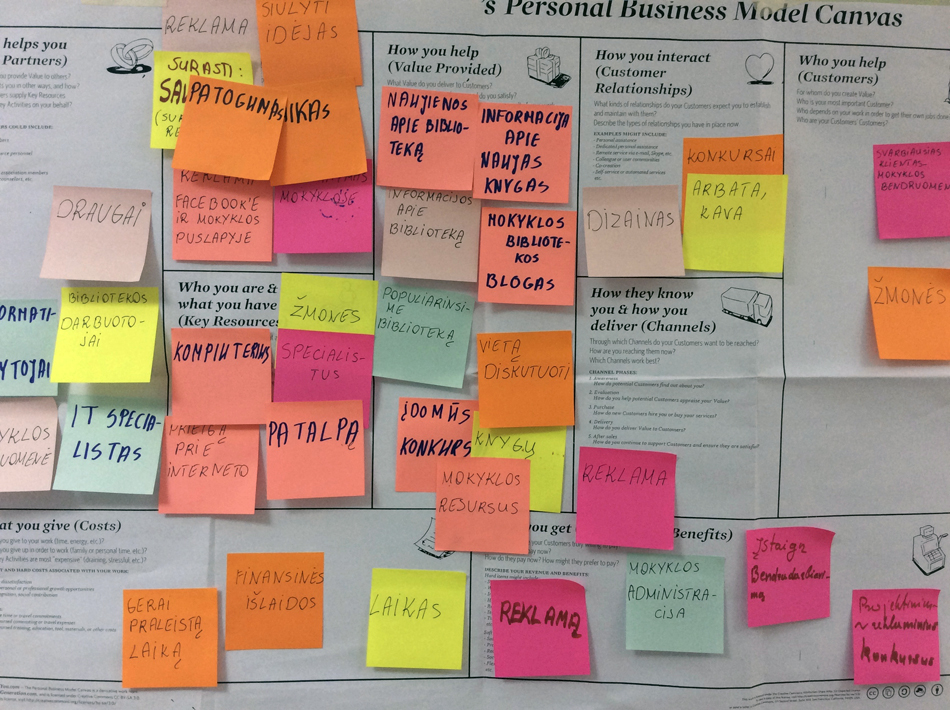
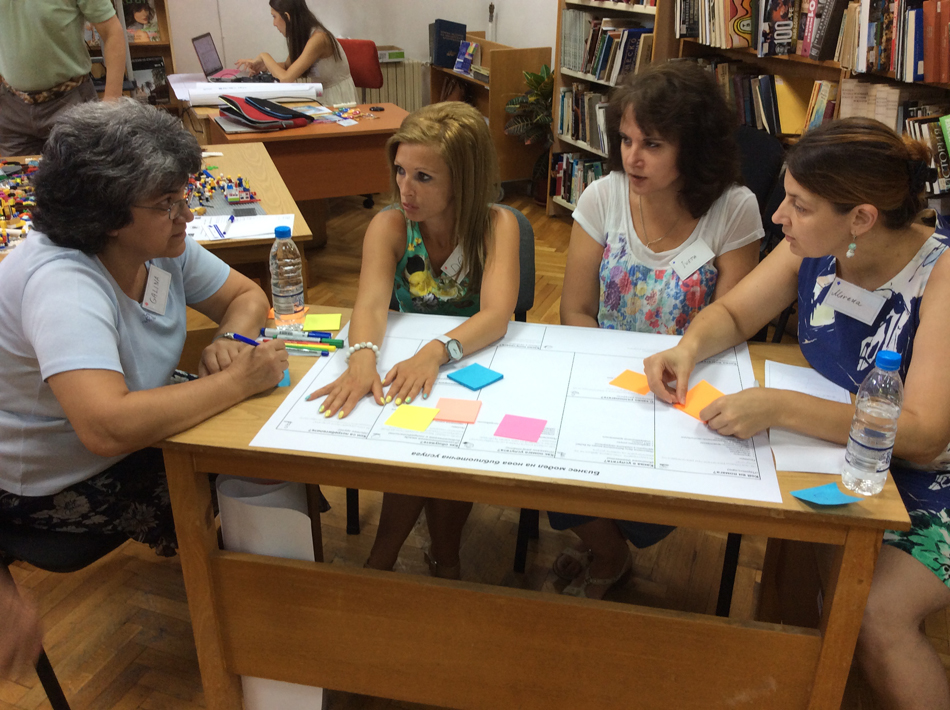
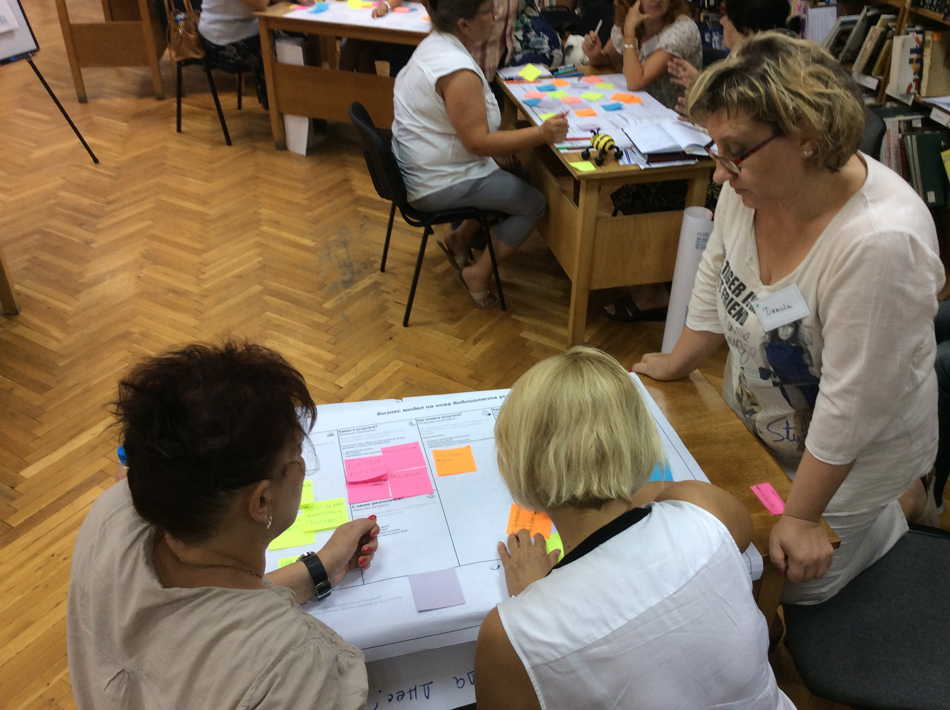
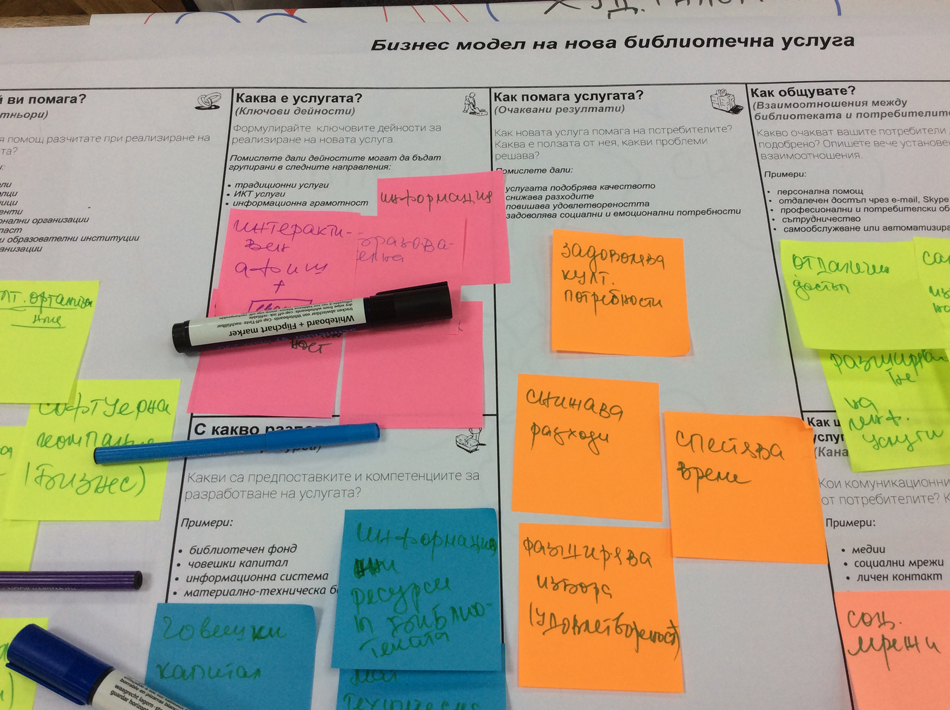
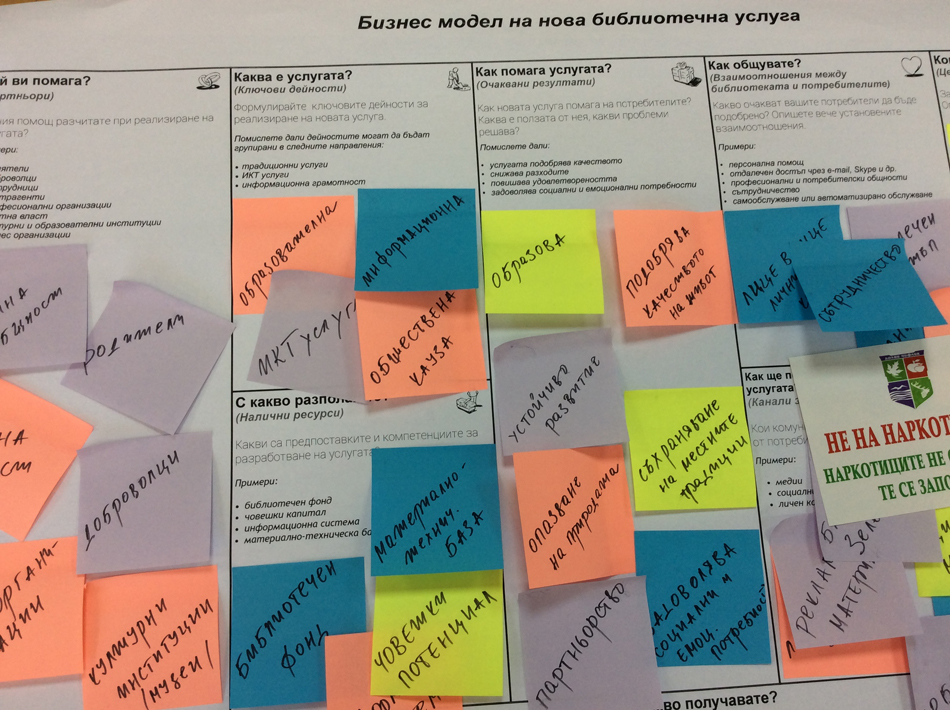
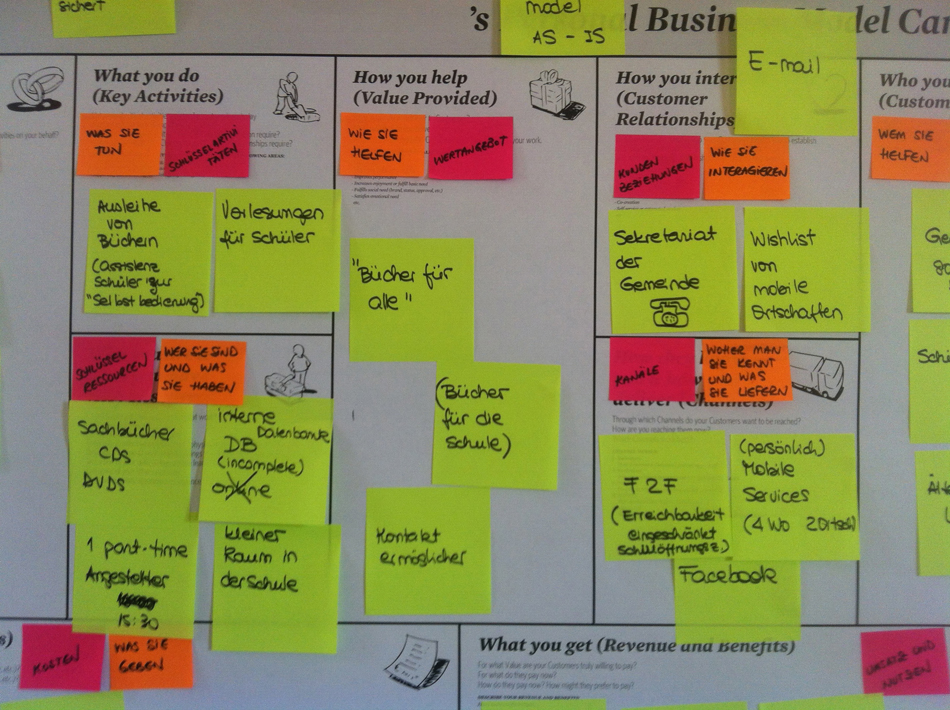

X-LIBRIS (2014-1-TR01-KA200-012958) is a Strategic Partnership for Adult Education within the Cooperation and Innovation for Good Practices Key Action of Erasmus+ Program. It is started on 1 September 2014 and will run for two years.
The Hacettepe University located in Ankara Turkey is the project coordinator. Several workshops implementing different methodologies Lego Serious Play, Business Model You, Gamification, Crowdfunding, Hero's Journey, were run in the partners country, Turkey, Germany, Lithuania, and Bulgaria. X-Libris methodology plays a role for transformation in the in-service training.
 Facebook
Facebook Twitter
Twitter
